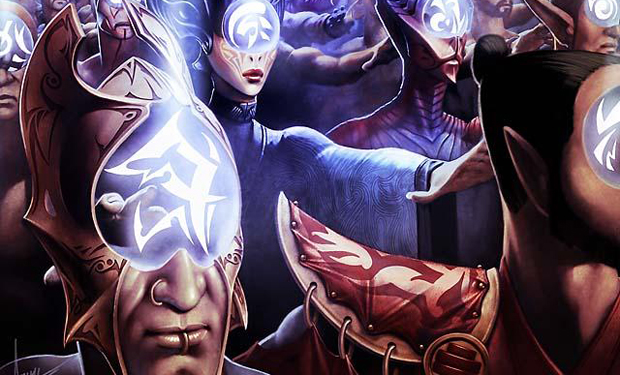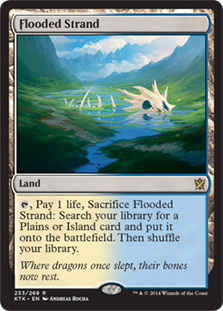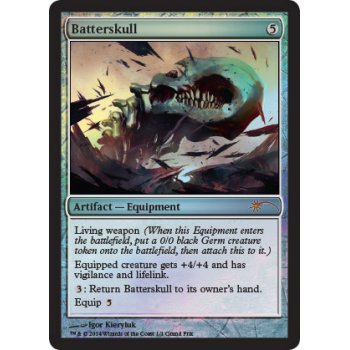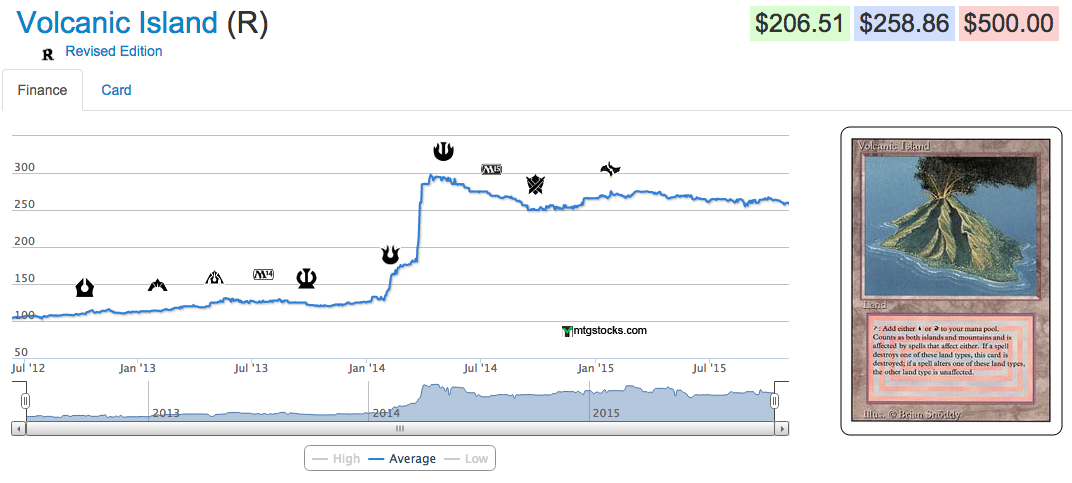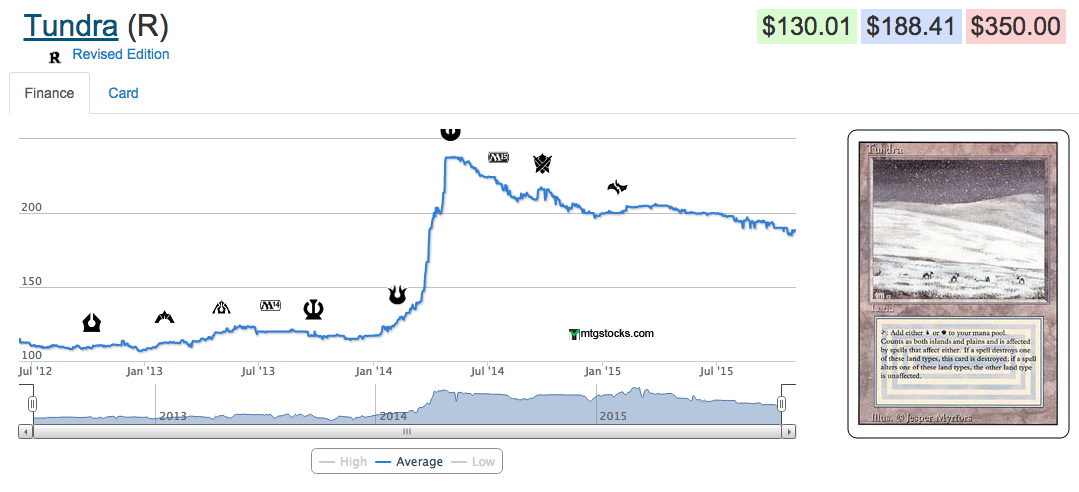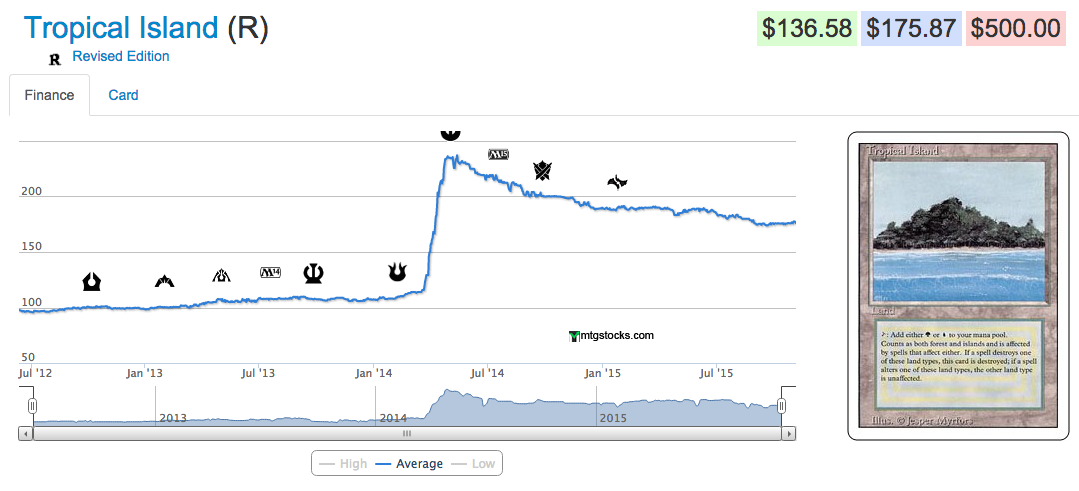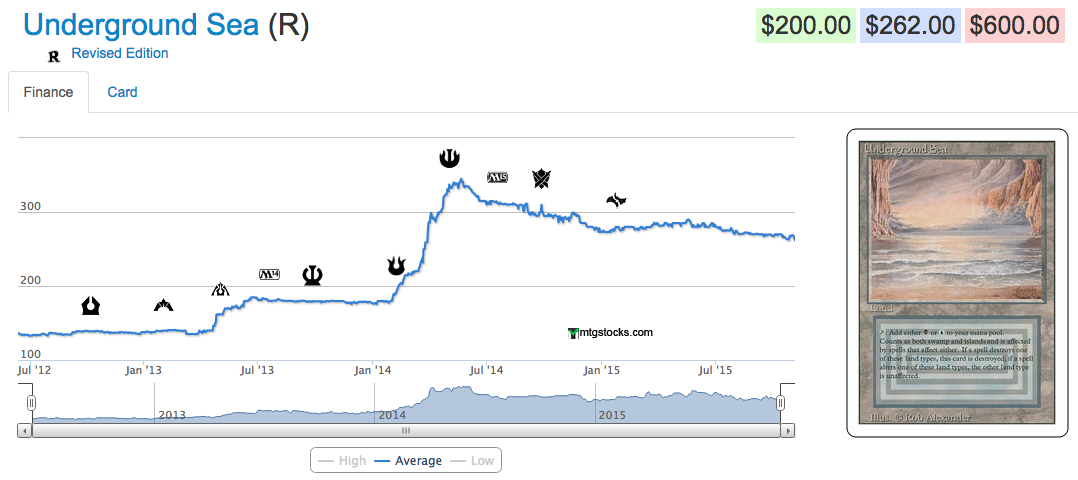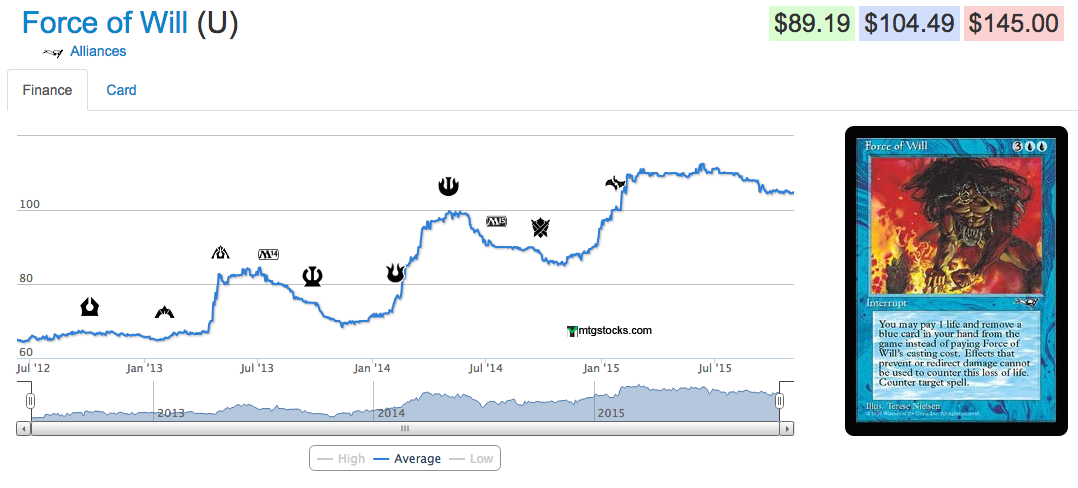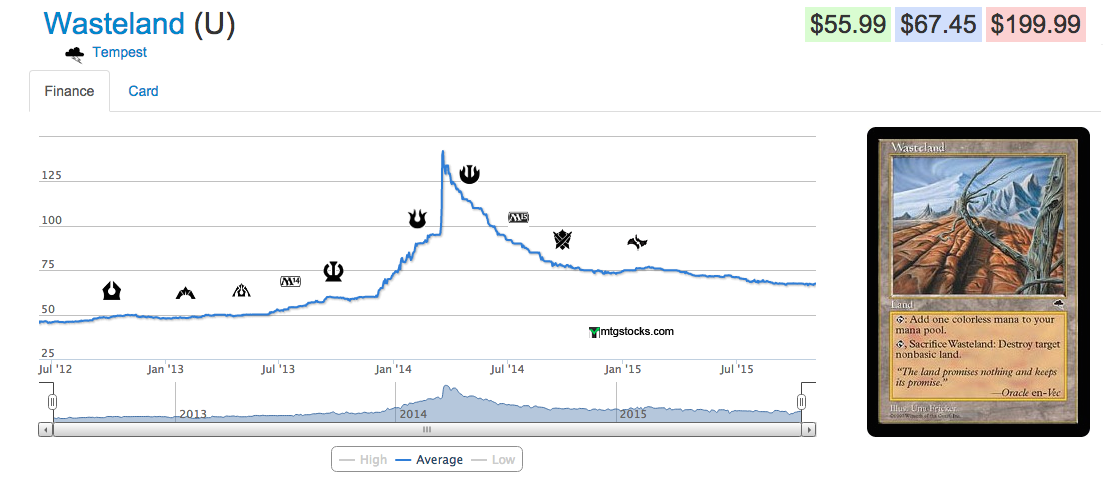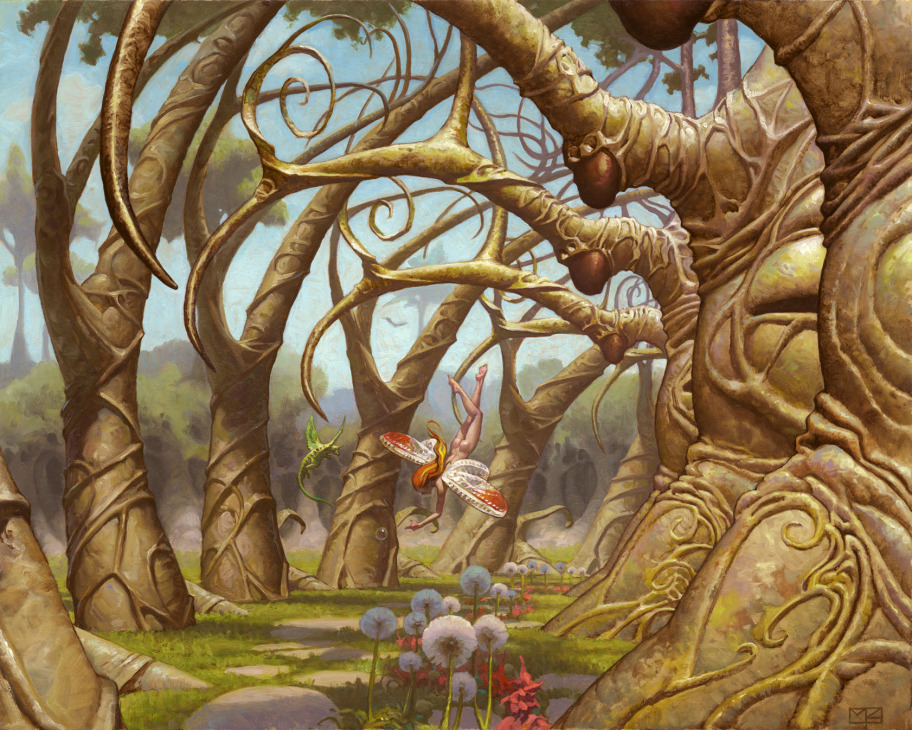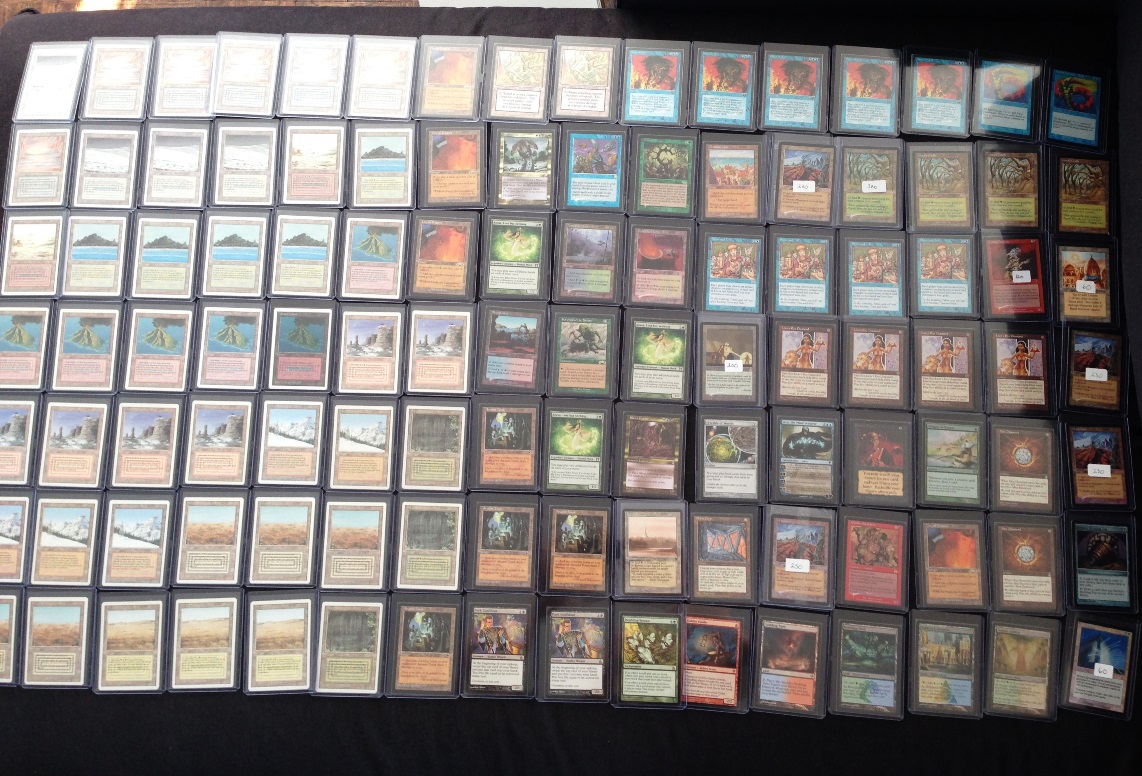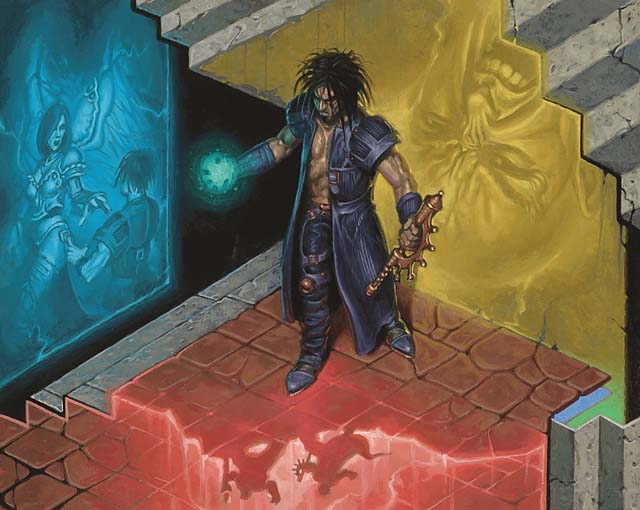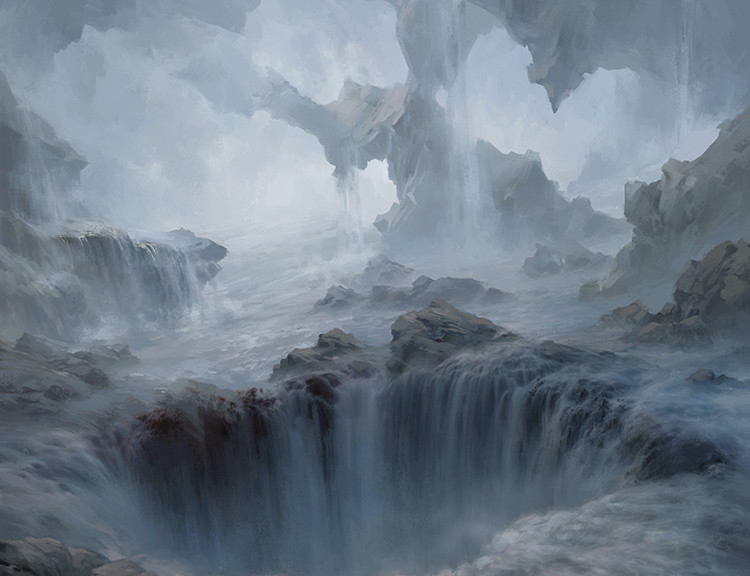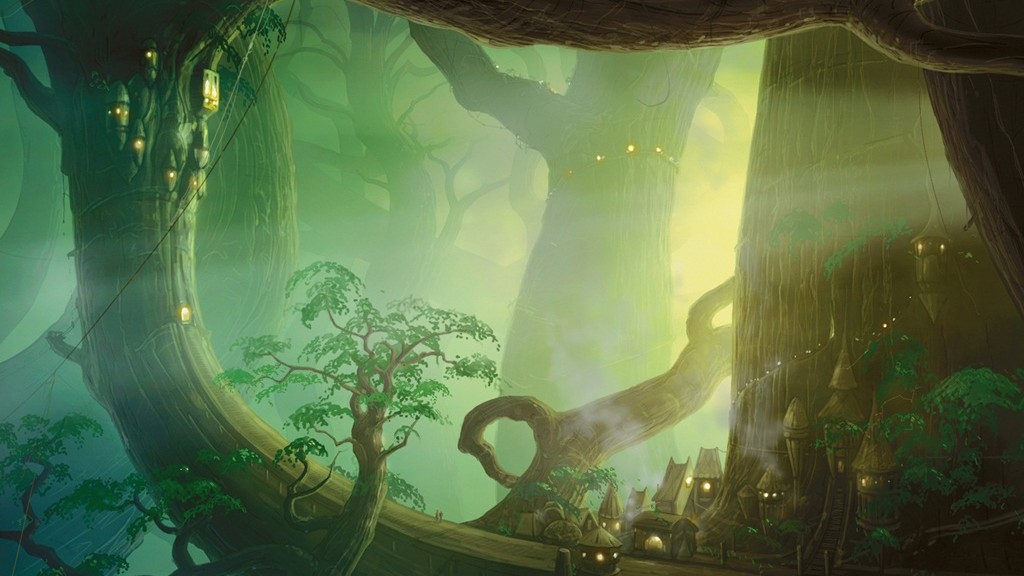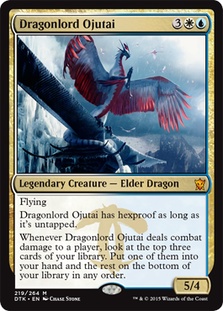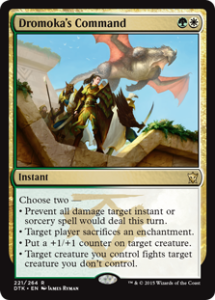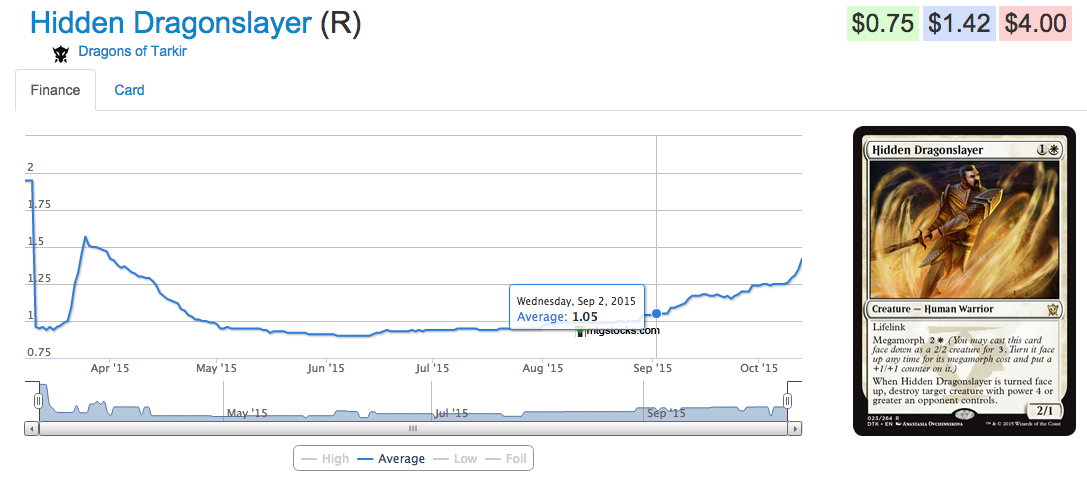I’m not going to call it a death knell. I’m not going to say the sky is falling. I’m not going to call it the hammer that shatters the format. But I’m also not going to shy away from it and what it indicates.
If you don’t know what I’m talking about, Star City Games made some very large waves Monday afternoon when it announced changes to its Organized Play system. Not only has the Open Series been renamed the “SCG Tour”—a weak imitation of the Pro Tour for sure, but still a positive development overall for Magic — and announce changes to some prizes and events, but it absolutely gutted its schedule of Legacy events.
To be sure, there’s a lot to digest from the full announcement, and I highly recommend reading it in full. Before I get into today’s full topic, I’ll touch on one thing I’m not concerned about: the slightly reduced number of events. SCG follows Wizards of the Coast in this regard, and while it does likely mean we haven’t had the explosive growth in the playerbase we had during the five previous years, tournament Magic is still incredibly healthy. SCG expanded its offerings at the lower levels, and the truth is that no matter how many people play Magic, the ecosystem can still only support so many events. With SCG and Wizards both lumping so many onto the schedule, it was bound to hit a wall sooner or later. Prize support is still strong across the board—heck, Wizards increased the prize for winning a GP to 10 grand—so this doesn’t throw up any flags for me.
But what does hit a few is the dearth of Legacy events on the first part of the schedule. I’ve had a few conversations on Twitter and elsewhere about what exactly this means, and there are a ton of ways to interpret it, but all readings try to answer one basic question:
Is Legacy Dying?
I’m approaching this from a neutral perspective, and I want to make that clear before I dive in. There are a ton of heated opinions on both sides of the aisle here, and truthfully, no one can say for sure what the future holds. So sitting here and just throwing my opinion out at you like it means anything more than the next players’ simply because I have a platform would be, frankly, arrogant of me. But what I can do is present the evidence we have, and allow all of us to draw our own conclusions.
With that said, let’s dig in.
Point: Star City Games has Functionally Dropped Legacy Support
For years, Star City’s Open series was the heart and soul of Legacy. Every Saturday would be a boring Standard format, but on Sunday we’d all have fun watching or playing Magic’s most exciting and diverse format. Survival-Vengevine broke out and broke the metagame, though it was ultimately a blue-black Merfolk deck that won the Grand Prix where Survival emerged.
This was of huge interest to the community at-large, and Survival of the Fittest began to inexorably take over the format. I played a lot of Legacy during this time, and when Survival was ultimately banned, I split the finals of an Open with Merfolk, kicking off what became the second-best romantic relationship of my life. I say this not because it’s hugely relevant to SCG’s actions, but to show that I’m not some shadowy finance guy who doesn’t know anything about the community; instead, I was as keyed in then as I am now, doing regular coverage.
So Legacy was huge then, and we saw rapid growth on a lot of cards in the format, or cards that might break out. So much so, in fact, that growing concern over the Reserved List became a huge, contentious issue again. Ultimately, this played into the creation of Modern, which both served as a replacement for the lagging Extended format and gave Wizards an eternal format not constrained by cards that wouldn’t be reprinted.
At first, SCG ignored the fledgling format, and even Modern 1Ks on Sunday failed to generate huge interest. I recall a conversation I had with a senior member of SCG around 2012 where he told me very simply how the company felt about Modern:
“You can see how we feel about it based on the schedule.”
At the time, that meant the company was fully committed to Legacy, which continued to be heavily supported. Today, we have just one Legacy event on the schedule for the first four months of the 2016 season.
Counterpoint: This is a Small Sample, Not a Mission Statement
It may seem from this that SCG is just off of the Legacy train. But let’s not forget that the company has always led the way when it comes to Legacy support, and it wasn’t that long ago that Grand Prix New Jersey completely ran the Legacy hype train off the rails—people were talking of taking freaking Standard decks to the event just to be there and get the playmat and deckbox and signed Brainstorm paraphernalia. Excitement ran wild, and the event ended up drawing more than 4,000 players, an incredible number for any event.
That’s hardly the sign of a dying format. Sure, SCG has pulled support of Legacy in their Open Series early in the year, but it doesn’t have a Legacy Grand Prix on the schedule this year. Why would a company support a format that ultimately ends up promoting someone else’s GP instead of its own? In this context, it makes sense why SCG would instead throw its support to other formats.
Point: Modern has Eclipsed Legacy as the Eternal Format of Choice
If there’s ever a contentious point to make, it’s this. But at the same time, this seems to certainly have evidence to support it. It’s evident in SCG’s scheduled events, in WOTC’s schedule events—including the Pro Tour—and Modern certainly generates more headlines. These days, it’s very rare when new cards come out that we talk about their Legacy playability; instead we’re much more interested as a community in how they’ll do in Modern. Because of this, there’s always something new to consider with the format, and every few months we see something new break out.
This speaks to how Modern—with its carefully curated banned list—is viewed by the majority as a more exciting format. I see a ton of players come into my store hoping to gets certain cards to break into Modern, but almost never does someone come looking for Legacy cards. Nearly every LGS around here has weekly Modern events, but none of them carry Legacy events. While this isn’t the same throughout the country or world—at least in the U.S., the coasts have more Legacy players than the Midwest or South—it’s certainly part of a larger trend.
And while we talked about how Grand Prix New Jersey hit big numbers, it failed to surpass Grand Prix Richmond, which is still the third-largest Grand Prix to date, with only the two Modern Masters Vegas events passing it. In this world, if you’re not growing, you’re dying, and these things seem to indicate that Modern is growing and Legacy is not. Legacy is not irrelevant because of these things, but Legacy has become to Modern what Vintage is to Legacy—existent with a passionate community but ultimately less relevant.
Counterpoint: Modern and Legacy Can Coexist Peacefully, and It Doesn’t Have to Be One or the Other
Everything said about Legacy and Modern—that one is less prevalent than the other on the schedule, one generates more day-to-day social media interest and headlines—can be said about Modern compared to Standard, as well. After all, no format is more played than Standard, and it dominates the Pro Tour schedule, not to mention being the LGS format of choice by and large. If we were to sample a given time period’s top headlines, it’s highly likely Standard would dominate Modern in those regards. But I don’t think anyone would say Modern is dying because these facts hold true, so why is it used to say that Legacy is dying?
Furthermore, fewer events doesn’t mean less interest—it simply means more pointed interest. The fact that Legacy doesn’t change as often as Modern is seen by many as a benefit since the deck you build today is less likely to get banned or hated out when you do get to play it. Legacy’s metagame doesn’t change as much as Modern’s simply because there are more cards legal, and this fact will automatically generate fewer day-to-day headlines. But that doesn’t mean people care about the format less, it just means there’s no need to obsess over it every day. And because the schedule isn’t saturated with events, the ones that do happen will have more success thanks to the condensed air time. No one gets tired of Legacy when you don’t have it shoved down your throats every week; can the same be said of Modern?
There’s more to a format than number of events and Reddit upvotes. Legacy has a thriving community and is in no way falling off.
Point: Legacy Prices on Staples Flatlined or Declined in 2015
Allow me a few graphs to illustrate this point.
That’s a lot of downward movement, and it’s certainly atypical from what we’ve seen in the past, where Legacy seemed to be a growing format rather than a stagnating or declining one. I spend more time tracking price movements of cards than 99.9 percent of people who play this game, and I can tell you that it’s extremely rare that I see Legacy cards make it onto the weekly or monthly interests page.
When I started playing this game seven years ago, there were always Legacy movements happening. A new deck would break out at an event, and cards would shoot up. Even if there wasn’t a new event, the substantial growth of players getting into the format would increase prices steadily enough to frequently make new cards worth watching. These days, that’s left solely to the purview and Standard and Modern.
Modern prices have, as a whole, increased despite reprint pressure in Modern Masters 2015. The reason is that more people want to play the format and are willing to purchase the cards, which moves the price up, regardless of card prices beforehand. If the same were true in Legacy, we’d see duals rising. Instead, they’ve fallen flat, and despite 2015 being another banner year for Magic, some of its most iconic cards couldn’t keep up with the growth. If Legacy were truly still growing, why wouldn’t this be the case? Even the most stapleish of all staples—Force of Will and Wasteland—experienced a flat or slightly negative 2015.
Even if you want to suggest that the movement in duals is tied to playability, it’s hard to make the same argument about these two cards, which are perpetual must-haves of the format. If Legacy were truly growing rather than fading, these graphs would look far different.
Counterpoint: Sure, 2015 Was Weak, but These Cards Are All Still Higher than They Were Two Years Ago
For a game that’s been around for nearly 25 years like Magic, taking one year of price movement to try and illustrate a trend for an eternal format is silly. No one claims the stock market is dying because it experiences a bad year or two. Trying to draw blanket conclusions from Legacy based on 2015 alone is a wasted exercise.
And if the format were truly fading, why are prices still far higher than they were two years ago, in many cases? The run-up was so much, so fast it’s natural to expect some settling, and these will rebound in the future.
Not to mention, there are a ton of factors that explain why prices didn’t move besides claiming the format is dying. It’s no secret Star City Games leads the market in these cards, and the run-up to Grand Prix New Jersey was a result of great advertising and market influence by SCG. Given that the company doesn’t have a GP this year to draw people to, why would it need to buy staples so aggressively? When the market leader has a Grand Prix-level reason to support these staples again, the movement will pick right back up.
Point: The Reserved List Exists, so Legacy Will Never Be Able to Be Played by Anything More than the Most Hardcore of Players
It’s a simple concept. There are exactly X number of dual lands on the market, and that number decreases every year as copies are lost or destroyed. Furthermore, because there will never be reprints of these cards, there is a hard cap to the number of players who can play top-tier Legacy decks at any given time. How can a format be anything but dying when the copies of cards needed to play literally die off more and more every year?
Even if we don’t reach the “hard cap” in Legacy, there’s a reason Reserved List staples have trended up over the last few years: only the most dedicated and well-off financially will be able to play. More and more players are priced out of the format every year, and they give up and sell their finite copies of dual lands, which go to players buying in who are willing and able to pay a premium for the chance to play Legacy. It’s very much a luxury among luxuries; after all, we see NBA teams get sold for more and more every time one comes for sale, but I still count only 30 teams in the league. It’s hard to call that “growing,” and as we established earlier, if you’re not growing, you’re dying.
Counterpoint: These Factors Have Been True for Years, and Haven’t Stopped Legacy’s Growth
Continuing the NBA example, it’s also hard to call that “dying,” either. If people are willing to pay more and more to buy in, what is that if not a sign of the format’s popularity? And given that popularity, how can you say that Legacy is dying?
Also, I haven’t seen TCGplayer sell out of dual lands recently. As of this writing, there are more than 100 copies of even the most popular blue duals available. If this “hard cap” was so dangerous, why haven’t we seen the market sold out yet? And for every dual that becomes “lost,” another becomes found. People are still turning up collections from the ’90s that are loaded with duals, and the number that are actually destroyed is so minuscule it doesn’t affect the overall market.
Attendance at Legacy events has continued to be strong, and players find ways to play even if it’s not with the most expensive duals. And when Standard can cost over $700, how is using the price of Legacy staples — that don’t rotate — a point against the format?
Conclusion
I have to say, I feel like both sides of these arguments have merits, and the truth likely lies somewhere in between. For me, the problem lies in the question itself: so many people are worried about proclaiming the “death” of Legacy because it’s a flashy headline, but the truth is that Legacy doesn’t have to be in the spotlight every single weekend to be relevant.
But no matter how I evaluate each individual point, it all comes back to one simple question for me: is Legacy more relevant today than it was five years ago? Will it be more relevant five years from today than it is now? I think it’s hard to argue that it will be. Wizards of the Coast has proven that it’s Modern that will be getting the support, both in reprints and in events, and over time, the format will continue to eclipse Legacy.
Yes, it will be fun whenever we get a Legacy event or there’s one on Twitch, just like it’s fun when Vintage occupies that niche now. There are way more cards out there for Legacy, so it will never truly be as rare or expensive as Vintage, but it will continue to be pushed into that corner, where it’s a luxury hobby within a luxury hobby. I don’t think this constitutes dying or even “fading,” but it’s hard to see Legacy being more relevant five or ten years from now than it was five or ten years ago.
That will mean something different to everyone, and the most important thing to consider moving forward is how you plan to interact with the format. If you want to be a hardcore Legacy player, I suggest looking toward local and regional events—many of which are already springing up to fill the void SCG left—and finding ways outside of SCG to support that hobby. If you’re a casual fan who enjoys watching the format, this will make those events we do get all the more exciting. If you’re someone who wants to get into competitive Legacy, this may make the transition a little bit easier in the coming years.
For all of us, what’s far more important than worrying about whether or not Legacy is “dying” is worrying about how you want to go about enjoying it. Because it is a fun ride, and that’s never fading away.
Thanks for reading,
Corbin Hosler
@Chosler88 on Twitter/Twitch/YouTube
